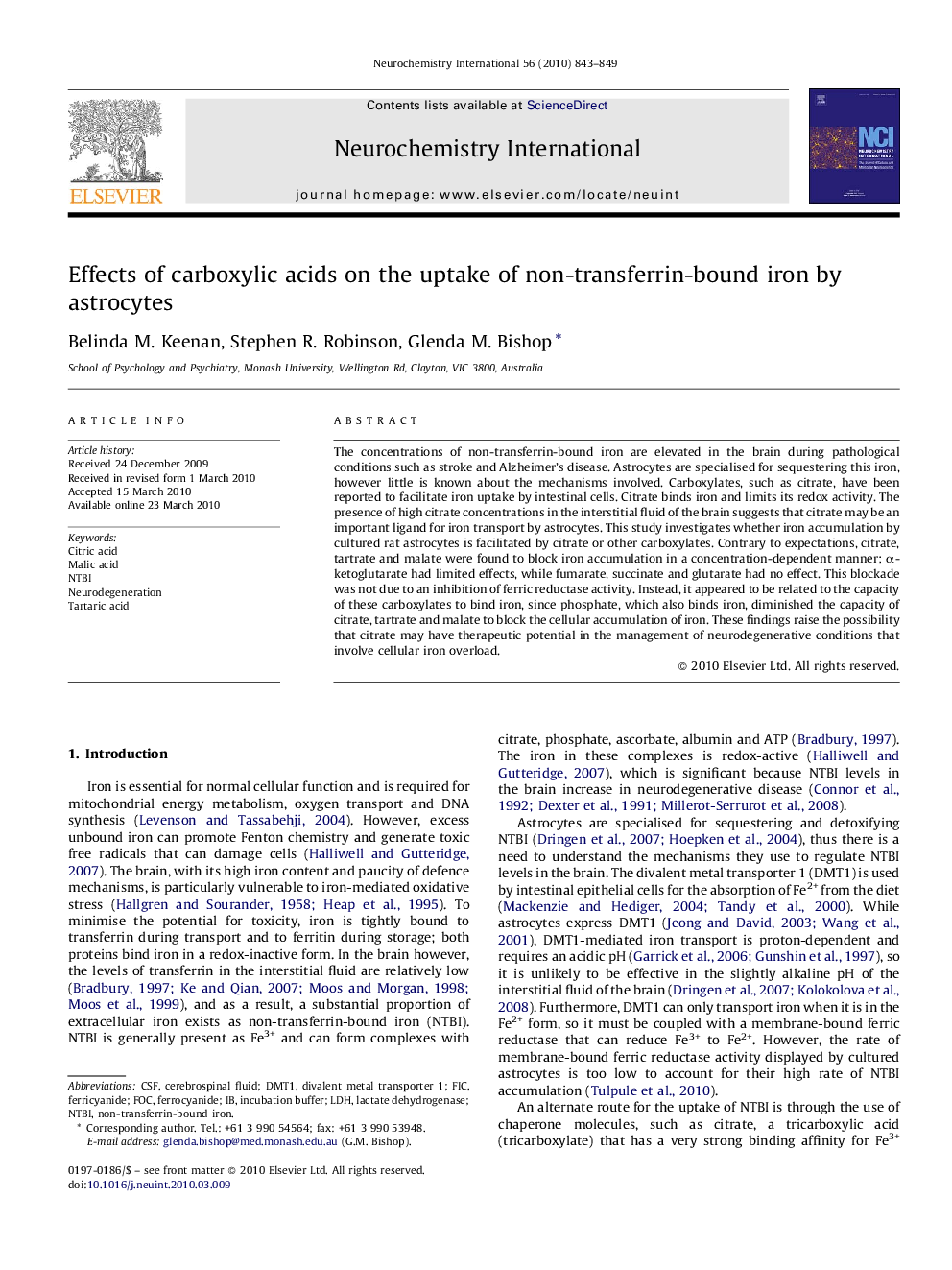| Article ID | Journal | Published Year | Pages | File Type |
|---|---|---|---|---|
| 2201456 | Neurochemistry International | 2010 | 7 Pages |
The concentrations of non-transferrin-bound iron are elevated in the brain during pathological conditions such as stroke and Alzheimer's disease. Astrocytes are specialised for sequestering this iron, however little is known about the mechanisms involved. Carboxylates, such as citrate, have been reported to facilitate iron uptake by intestinal cells. Citrate binds iron and limits its redox activity. The presence of high citrate concentrations in the interstitial fluid of the brain suggests that citrate may be an important ligand for iron transport by astrocytes. This study investigates whether iron accumulation by cultured rat astrocytes is facilitated by citrate or other carboxylates. Contrary to expectations, citrate, tartrate and malate were found to block iron accumulation in a concentration-dependent manner; α-ketoglutarate had limited effects, while fumarate, succinate and glutarate had no effect. This blockade was not due to an inhibition of ferric reductase activity. Instead, it appeared to be related to the capacity of these carboxylates to bind iron, since phosphate, which also binds iron, diminished the capacity of citrate, tartrate and malate to block the cellular accumulation of iron. These findings raise the possibility that citrate may have therapeutic potential in the management of neurodegenerative conditions that involve cellular iron overload.
